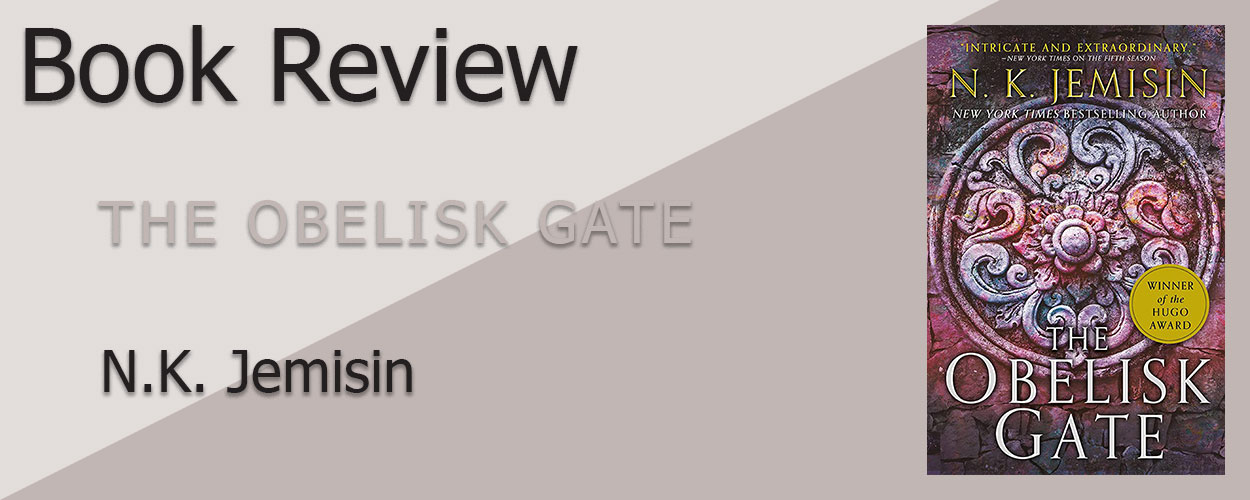

4.5 stars; I really liked it
Book two of the Broken Earth series, and whew! book one ended on a cliff-hanger. That one line somewhere near the beginning of that book talking about what people miss is what’s lacking I understood right away because there was no mention of any moon and I knew that has to be important. I was so excited to pick up this book and begin reading!
Read: May 15 – May 19, 2023
Genre: Fantasy, Science Fiction
Audience: Adult
Book contains: violence, sex, foul language, gore, dark themes
Purchase a copy from Amazon.ca
Essun has never considered the moon, but now, with Alabaster’s teachings, she must use it to stop the Seasons. Meanwhile, Castrima is being threatened by outside forces.
Nassun didn’t know what she was getting into when she left Tirimo with her father. She remembers her brother, dead upon the floor; she remembers her mother’s gruelling training so she could control her orogeny; she remembers a feeling of despair. She and her father flee south, searching for a special place her father knows.
This book was coming fresh off the heels of The Fifth Season, and I was super excited for it. The overarching plot of the trilogy is really taking shape now, and I can see what’s hoping to be accomplished by book 3 clearly. Instead of the story being told by the three identities (so to speak) of Essun, it’s now Essun, her daughter, and one other character (whom we already know but I won’t reveal because of spoilers).
When I read the first book, I was surprised and slightly confused by the use of second person for Essun’s perspective. Now, it’s much more obvious to me. There are more interludes in this book, all told from the first-person perspective of a stone eater, and these interludes reveal that the story is actually being told to Essun by the stone eater. It’s quite brilliantly done, actually.
Whereas the entirety of the first book is essentially from Essun’s perspective and we didn’t get to know much beyond what she knows, this book gives outside perspectives (i.e. from Nassun). I was quite surprised, actually, to see such a difference in viewpoints, and it’s allowed me to fully appreciate the characters all the more.
Nassun is a powerful orogene like her mother, and while she’s only ten years old (for the majority of the book), she’s wise beyond her years. She still acts like a ten-year-old though, carrying that naivety in conjunction with knowing more about the cruelty of the world than someone her age should have to deal with.
Essun is the same as in the first book, though we get more depth to her. She is very much like a bulldozer, powerful and stubborn and hard-headed, often acting without thinking of the consequences because damn the consequences when she’s so strong. Like with the destruction of Tirimo in the first book, she acts in the way she’s learned to when threatened: to attack. It’s survival of the fittest, so I can understand why she acts this way, and the narrative is written so well that I can’t fault her for the mistakes she makes, even the purely selfish ones. The world has made her cold, and it’s understandable.
What I also found interesting was the exploration of generational trauma in this book, circling around the relationship between Essun and Nassun, and the comparison of Fulcrum-trained orogenes like Essun and Alabaster and Feral ones like Ykka.
Again, I think N.K. Jemisin’s writing style is superb. It’s refreshing and different to other styles I’ve read, especially how she uses punctuation and paragraph styling to convey emotion—omitting end punctuation and letting thoughts slide together to imitate how real thoughts act in moments of high stress or realization. It’s not something I’ve seen done successfully before, and I’m loving every second of it.
Not a scene was wasted. Problems and solutions flowed together in what came up naturally and what was needed later on for the sake of the plot. The flow between characters was also quite good, giving backstory where it was needed and making great use of the characters’ limited knowledge.
The use of dramatic irony was very high in this book, actually, when switching between characters. We, the audience, know so much more than the characters, and it really shows how differently they each view the world and how secrets tear people apart.
There were, of course, some scenes and things I didn’t like about the book, but they were greatly overshadowed either by what I liked about the book, or were so ingrained into the fabric of the world that I came to accept those aspects as unchangeable—which is a sign of great writing.
I was able to listen along to the first third of this book done by a reader, but the rest was read the old-fashioned way, which slowed me down a little, but didn’t make the book any less entertaining. (I just miss being able to listen to the accents that are given to each character.)
For people who loved the first book, they’ll love this one. This whole series has been a joy to read so far, and though there was less explicit and even implicit sex in this book than the last one, I must reiterate the warning about dark themes and somewhat gory scenes.
The Broken Earth Trilogy Book 1: The Fifth Season by N.K. Jemisin
The Broken Earth Trilogy Book 3: The Stone Sky by N.K. Jemisin
American Gods by Neil Gaiman
Dune Book 1: Dune by Frank Herbert
Tigerpetal Press is a small book press dedicated to publishing local authors and poets.